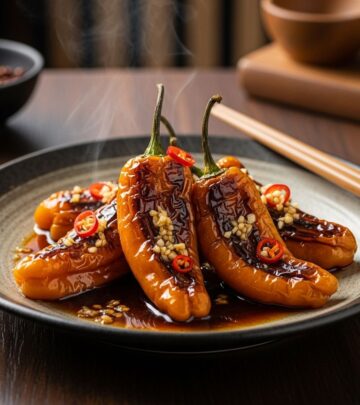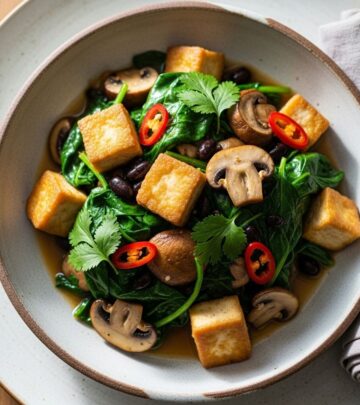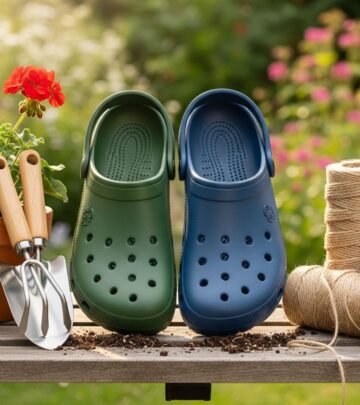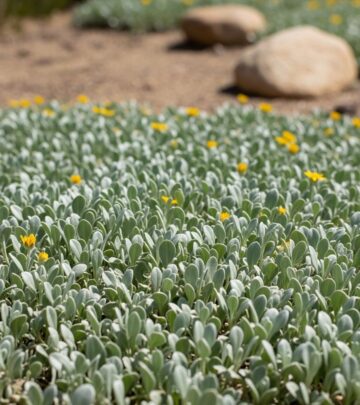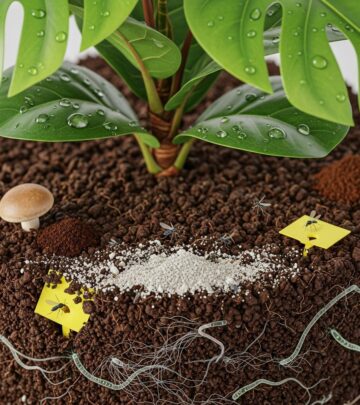Cherry Trees Vs Cherry Blossom Trees: Complete Garden Guide
Explore the distinctions between fruiting cherry trees and ornamental cherry blossoms, including cultivation, blossoms, and landscape impact.
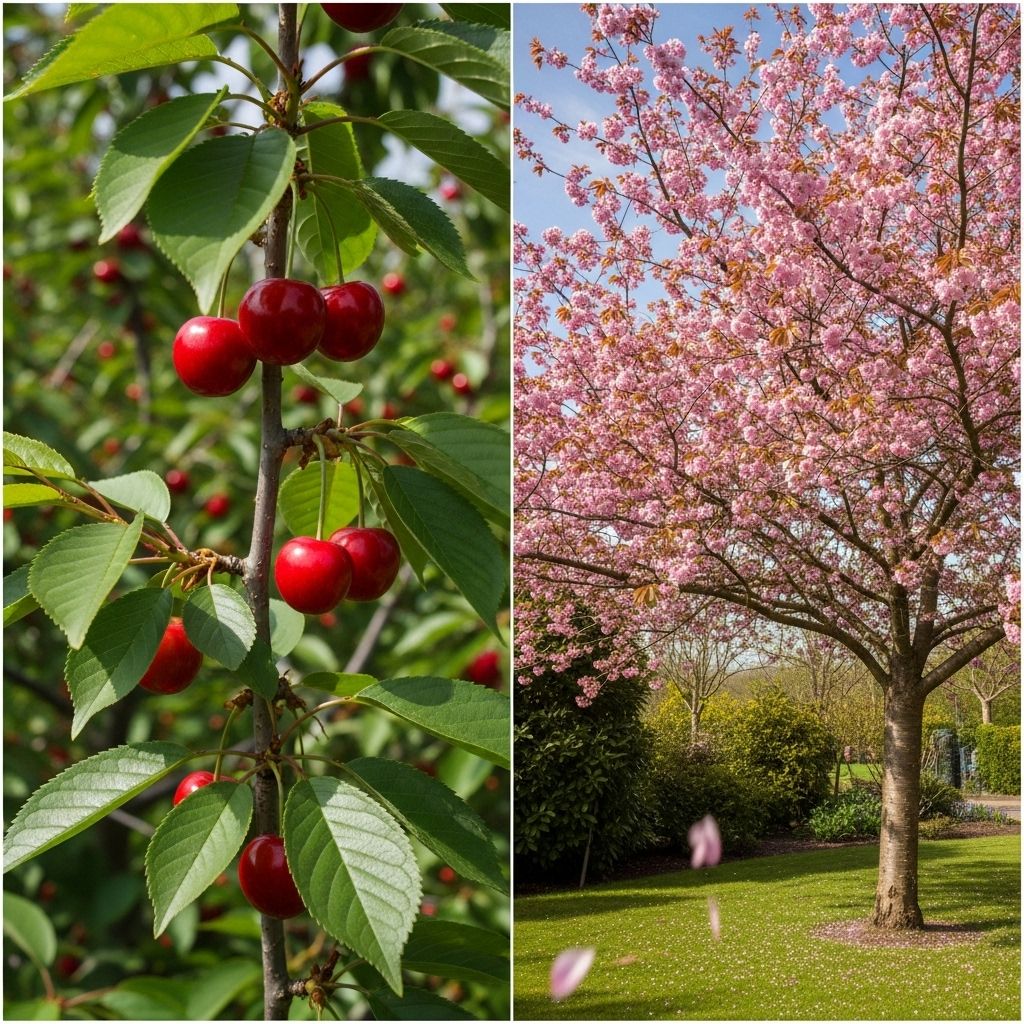
Image: HearthJunction Design Team
Cherry Trees vs. Cherry Blossoms: What’s the Difference?
Cherry trees and cherry blossom trees often spark confusion due to their similar names and somewhat alike appearances. However, each serves a unique role in gardens and landscapes, offering either luscious fruits or captivating floral displays. In this comprehensive guide, we’ll dive into their differences, varieties, characteristics, care requirements, and the best ways to incorporate these beautiful trees into your outdoor spaces.
Table of Contents
- Understanding the Differences
- Appearance and Growth Habits
- Flowering and Fruit Production
- Cultivation and Care Requirements
- Popular Varieties
- Landscape and Garden Uses
- Frequently Asked Questions (FAQs)
Understanding the Differences Between Cherry Trees and Cherry Blossoms
While both cherry trees (Prunus spp.) and cherry blossom trees belong to the same genus, their cultivation and features serve distinctly different purposes:
- Cherry trees are cultivated for fruit. They produce the sweet or tart cherries used in cooking, baking, and eating fresh.
- Cherry blossom trees are grown mainly for their decorative value—especially their stunning floral displays in spring. These are often called ornamental cherries or sakura.
This fundamental distinction means that if you want delicious cherries for the table and jaw-dropping spring blooms, you’ll need to grow both types.
| Specifications | Cherry Tree | Cherry Blossoms (Ornamental) |
|---|---|---|
| Primary Purpose | Fruit Production | Ornamental Flowers |
| Hardiness Zones | 4–7 | 5–8 |
| Size at Maturity | Up to 25 feet | Up to 40 feet |
| Sun Preference | Full Sun | Partial Shade |
| Soil Preference | Any Well-Draining | Loamy, Moist |
Appearance and Growth Habits
For much of the year, cherry fruit trees and ornamental cherry blossom trees resemble each other with similar leaf shapes and branch structures. However, there are marked differences:
- Height: Ornamental cherry blossom trees often grow taller—sometimes exceeding 30 or even 40 feet—while fruiting cherry trees typically max out around 15 to 25 feet.
- Canopy: Both types develop a broad crown, commonly spreading about 20 feet.
Leaf and Branch Characteristics
- Leaves: Both types tend to have similar glossy, serrated leaves, although some ornamental varieties produce coppery or bronzed young foliage.
- Branching: Both exhibit a graceful, arching branch pattern, contributing to their beauty in landscapes.
Flowering and Fruit Production
Cherry Blossoms: A Floral Spectacle
Ornamental cherry blossom trees are cherished for their exquisite flowers in pink, rose, or white hues. They have been selectively bred for more striking and larger blooms compared to their fruiting cousins. In Japanese culture, the arrival of sakura signals spring, inspiring festivals worldwide.
- Blossom Color: Most ornamental cherry trees bloom in shades of white, light pink, or deep rose. Some rare varieties may produce yellow or greenish flowers.
- Petal Count: Wild types typically have five petals per flower, but cultivated varieties can have ten, twenty, or even thirty, as seen in the yaezakura types.
Example: ‘Fugenzo’ cherry features double, rose-pink petals that fade lighter with age, up to 30 petals per blossom. - Flower Arrangements: Blossoms may appear singly or in clusters, sometimes creating a cloud-like effect on mature trees.
Cherry Trees: Beauty with a Fruity Bonus
- Blossom Color: Typically white, sometimes tinged with pale pink.
- Fruit: Pollinated flowers develop into edible cherries, ranging from sweet (used for fresh eating) to sour (used for pies and preserves).
Blossom-to-Leaf Timing
- Early-blooming ornamental trees often flower before leaf-out, giving a uniform, cloud-like effect.
- Later-blooming varieties may have leaves emerging alongside or even before the flowers, leading to a more mixed appearance.
Cultivation and Care Requirements
While both types of cherry trees share some basic care needs, there are important distinctions that can impact your success as a gardener.
Climate and Hardiness
- Cherry Fruit Trees: Prefer USDA zones 4–7, where winters are cold enough to ensure dormancy but summers are not too hot.
- Cherry Blossom Trees: Many thrive in zones 5–8 and are sometimes hardier or more adaptable to a wider range of conditions, especially regarding shade.
Sun and Soil Needs
- Sunlight: Fruiting cherries demand full sun (at least 6 hours daily) for optimal fruit set and health. Ornamental cherries do best in full sun but usually tolerate partial shade better, though excessive shade can reduce bloom quality.
- Soil: All cherry trees need well-draining soil. Fruiting varieties are more forgiving, but ornamentals truly flourish in loamy, moist, organic-rich soils.
Water and Fertilization
- Water: Both require regular moisture, particularly in their first few years. Established ornamentals may tolerate short dry spells; fruit trees need steady watering during fruit set.
- Fertilization: Annual applications of balanced fertilizer in early spring support both floral display and fruit development.
Pruning and Maintenance
- Cherry Trees: Require annual pruning to maintain shape, remove suckers, and promote air circulation—vital for disease prevention.
- Ornamental Cherries: Less pruning is needed, except to remove dead or crossing branches and maintain aesthetics.
Pest and Disease Management
- Sour and sweet cherry trees are susceptible to fungal infections (e.g., brown rot, cherry leaf spot) and insect attacks (e.g., aphids, cherry fruit flies).
- Ornamental cherries can experience similar issues but, since fruit isn’t the goal, they’re less impacted by some pests.
Popular Varieties
Ornamental Cherry Blossoms
- Somei Yoshino: The most celebrated sakura variety in Japan, known for pale pink, almost white single blooms that open before the leaves.
- Kwanzan: Double pink blooms with up to 30 petals per flower and a highly ornamental presence.
- Fugenzo: A centuries-old Japanese variety with rose-pink, double blossoms that lighten with age.
- Okame: Upright growth habit, deep pink single flowers, prized for early blooming.
- Weeping Cherry: Graceful, pendulous form with single or double white-to-pink blooms.
Fruit-Bearing Cherry Trees
- Bing Cherry: Classic sweet cherry with large, dark red fruit.
- Rainier: Yellow-skinned, red-blushed cherries with exceptionally sweet flavor.
- Montmorency: Most popular tart cherry, ideal for pies and preserves; self-fertile.
- Stella and Lapins: Self-fertile sweet cherries suitable for home gardens.
Landscape and Garden Uses
Both cherry trees and ornamental cherry blossoms have a place in thoughtfully designed gardens, but how they are used differs based on their primary features.
Fruit Cherry Trees
- Home Orchards: Planted for their productive yields, often in rows to facilitate harvesting.
- Edible Landscaping: Dual-purpose as both an attractive flowering tree and a source of fresh fruit.
- Pollinator Attraction: Their spring blooms draw bees and other pollinators, supporting the ecosystem.
Cherry Blossom Trees
- Ornamental Displays: Used as feature specimens or in groups to create breathtaking spring displays.
- Shade and Structure: Larger varieties make excellent shade trees and can anchor garden designs.
- Festival Gardens: Iconic in traditional Japanese gardens and at cultural events celebrating spring renewal.
Comparison Table
| Feature | Cherry Fruit Trees | Ornamental Cherry Blossoms |
|---|---|---|
| Main Purpose | Fruit Production | Flower Display |
| Mature Height | 15–25 ft | 20–40 ft |
| Blossom Color | White (sometimes pale pink) | Light pink, rose, white, rare yellow/green |
| Petal Count | Usually 5 | 5–30 or more (cultivated types) |
| Edible Fruit | Yes | No (fruit, if any, is small and inedible) |
| Best Sun Conditions | Full Sun | Full Sun to Partial Shade |
| Care Requirements | High (pruning, pest control) | Moderate |
Frequently Asked Questions (FAQs)
Can ornamental cherry blossom trees produce edible fruit?
Most ornamental cherry blossoms do not produce significant edible fruit. Some might bear small, bitter drupes, but these are generally inedible for humans and better left for birds and wildlife.
Can I plant fruiting and ornamental cherry trees together?
Absolutely! In fact, planting both in your garden gives you the best of both worlds: stunning spring displays and delicious summer cherries. Ensure they have enough spacing and proper sunlight for optimal health.
What is the typical lifespan of cherry and cherry blossom trees?
Most cherry trees, including both fruiting and ornamental types, have lifespans ranging from 20 to 40 years. Some, particularly ornamental varieties, might live longer with good care and ideal conditions.
Are cherry trees or cherry blossoms difficult to grow?
Fruiting cherry trees are usually a bit more demanding, requiring vigilant pruning, pest management, and precise watering. Ornamental cherry blossom trees are more forgiving and adaptable, especially regarding soil and sunlight, but still benefit from attentive care.
Do both types lose their leaves in the fall?
Yes, both cherry and cherry blossom trees are deciduous and will shed their leaves in autumn. Their foliage often turns yellow or red, adding a final burst of fall color before winter dormancy.
Which tree is best for small gardens?
Dwarf or compact cherry tree cultivars (whether fruiting or ornamental) are ideal for smaller spaces. Consider varieties like ‘Stella’ (fruiting) or ‘Snow Fountain’ (ornamental weeping cherry) for compact growth without sacrificing beauty or productivity.
Conclusion: Choosing the Right Cherry for Your Garden
While cherry fruit trees and cherry blossom trees share a genus and a general appearance, they diverge in purpose, care, and landscape impact. If your goal is to enjoy abundant fresh cherries each summer, opt for fruiting cherry trees and give them the attention they need. If, instead, your focus is on breathtaking springtime floral displays, ornamental cherry blossom trees are a superb choice. For gardeners eager not to choose, planting both will ensure your landscape dazzles with both color and bounty—year after year.
References
Read full bio of medha deb

